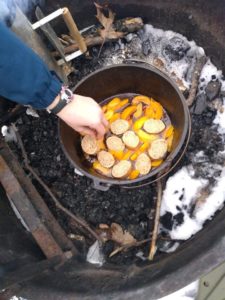
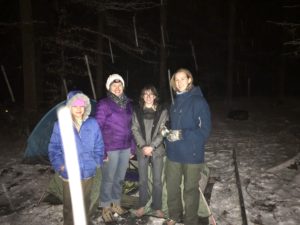 Troop 1920 had their first campout and first bridging this weekend. The weather was cold, but the Scouts didn’t complain one bit. We arrived to snow and made peachy french toast in the dutch oven for breakfast and then went on a 5 mile very muddy hike. Lunch on the trail was followed by dinner and another night camping, this time in the rain. While we were doing that, representatives of our troop went to their first Webelos bridging. We had a really busy weekend, and although we’re tired, we had our first Scout make Scout rank.
Troop 1920 had their first campout and first bridging this weekend. The weather was cold, but the Scouts didn’t complain one bit. We arrived to snow and made peachy french toast in the dutch oven for breakfast and then went on a 5 mile very muddy hike. Lunch on the trail was followed by dinner and another night camping, this time in the rain. While we were doing that, representatives of our troop went to their first Webelos bridging. We had a really busy weekend, and although we’re tired, we had our first Scout make Scout rank.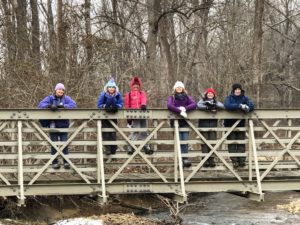
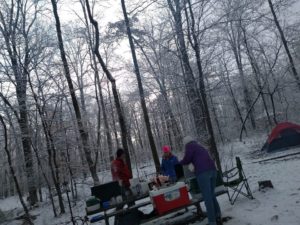

 Wow! This years’ Klondike Derby was a fantastic, record-setting success!
Wow! This years’ Klondike Derby was a fantastic, record-setting success!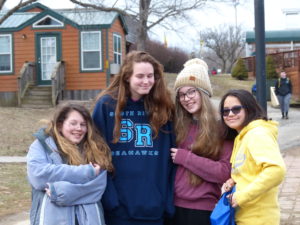 The Klondike staff and volunteers developed 36 challenging stations set out across all of the Harpers Ferry KOA. Twelve stations were brand new, another four stations weren’t offered last year, and al-most every station had a new twist on it so returning scouts didn’t have a leg-up on first timers.
The Klondike staff and volunteers developed 36 challenging stations set out across all of the Harpers Ferry KOA. Twelve stations were brand new, another four stations weren’t offered last year, and al-most every station had a new twist on it so returning scouts didn’t have a leg-up on first timers.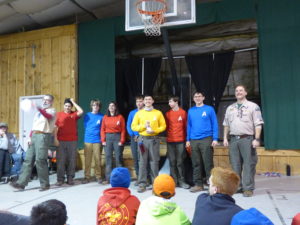 To compete in the Klondike, a patrol must manage their time wisely. They have seven program hours and a choice of stations of varying difficulty and pointes. The planning and leadership challenge is to earn as many points as possible, quickly, and move through as many stations as possible.
To compete in the Klondike, a patrol must manage their time wisely. They have seven program hours and a choice of stations of varying difficulty and pointes. The planning and leadership challenge is to earn as many points as possible, quickly, and move through as many stations as possible.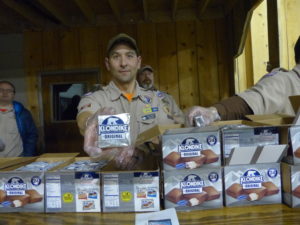 The 2019 Old Dominion District Klondike Derby welcomed troops, crews, and volunteers from the following districts: Aquia, Baltimore Area Council’s Capitol District, Colonial, Occoquan, Patriot, Patuxent, Piedmont, Po-tomac, Powhatan, Seneca, Washington DC, and Western Shore. Don’t see your district listed? Join us next year: Friday, January 31 to Sunday, February 2, 2020. Once again, we will offer discounts for units that leave Saturday night for religious observances!
The 2019 Old Dominion District Klondike Derby welcomed troops, crews, and volunteers from the following districts: Aquia, Baltimore Area Council’s Capitol District, Colonial, Occoquan, Patriot, Patuxent, Piedmont, Po-tomac, Powhatan, Seneca, Washington DC, and Western Shore. Don’t see your district listed? Join us next year: Friday, January 31 to Sunday, February 2, 2020. Once again, we will offer discounts for units that leave Saturday night for religious observances!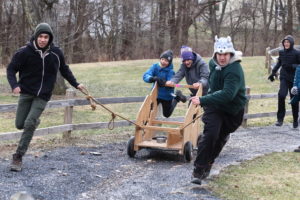 In 1897 a gold discovery near Klondike, a region of the Yukon territory in northwest Canada, triggered the Klondike Gold Rush, which lasted from 1897 until 1899. Around 100,000 people decided to travel there, but only about 30,000 have been reported to have made it there.
In 1897 a gold discovery near Klondike, a region of the Yukon territory in northwest Canada, triggered the Klondike Gold Rush, which lasted from 1897 until 1899. Around 100,000 people decided to travel there, but only about 30,000 have been reported to have made it there.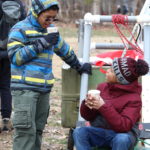 In 1949 Boy Scout Troops from the Northern United States and from Canada started their reenactment of the Klondike Gold Rush to test their winter Scout skills and called it the Klondike Derby. It has since been adapted by Troops all over the United States, especially those with snow in their winters.
In 1949 Boy Scout Troops from the Northern United States and from Canada started their reenactment of the Klondike Gold Rush to test their winter Scout skills and called it the Klondike Derby. It has since been adapted by Troops all over the United States, especially those with snow in their winters.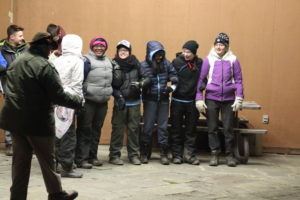 On Saturday, January 26, Units from the NCAC Potomac District met at Little Bennett Campgrounds in Germantown Maryland, to compete in the annual Potomac Klondike Derby. Despite most of the snow from the previous week washed away by Thursday’s rain, the freezing temperatures ensured the genuine Klondike winter feel, and most of the Scouts earned their Potomac District Polar Bear Patch for overnight camping below freezing point.
On Saturday, January 26, Units from the NCAC Potomac District met at Little Bennett Campgrounds in Germantown Maryland, to compete in the annual Potomac Klondike Derby. Despite most of the snow from the previous week washed away by Thursday’s rain, the freezing temperatures ensured the genuine Klondike winter feel, and most of the Scouts earned their Potomac District Polar Bear Patch for overnight camping below freezing point.
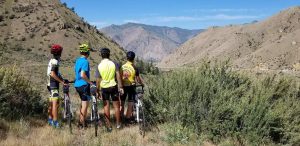 by James Ye
by James Ye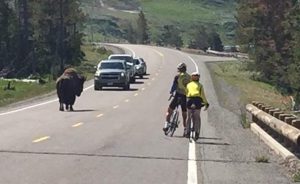 What I was planning to undertake was a 66-day expedition zigzagging across the United States, connecting the west coast to the east through 15 states. The program, Eagle Scouts Cycling Across America (ESCAA) 2018, catered to scouts of high adventure ages and senior ranks capable enough to survive the trip.
What I was planning to undertake was a 66-day expedition zigzagging across the United States, connecting the west coast to the east through 15 states. The program, Eagle Scouts Cycling Across America (ESCAA) 2018, catered to scouts of high adventure ages and senior ranks capable enough to survive the trip. 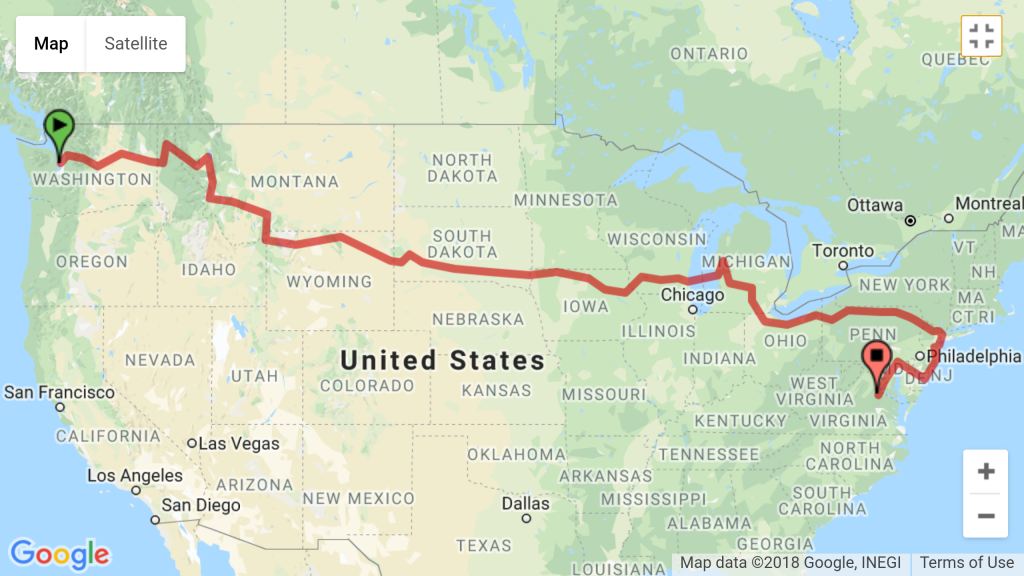
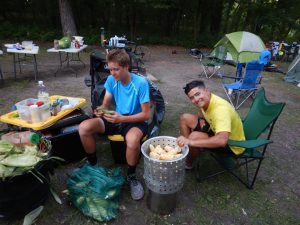 In Washington State, the second day of the trip from Monroe to Leaveworth was a combination of both mentality and physical strength. 90 miles, 5500 feet of elevation, arguably the hardest day on the entire trip. We experienced heat like never before, legs burning, chest beating, stomach aching, and climbed at what seemed like the slowest pace possible up a relentless ten-mile hill. Surrender seemed imminent, and a possible solution to give in was appetizing. However, what kept me going was not only encouragements from the team, but also mental resilience, as well as the mindset that if I could finish this day, the toughest day on the entire trip, I could probably finish all 4000 miles. All of us slowly reached the peak of Stevens Pass, and never in my life had I felt more accomplished, more content with myself, than ever before.
In Washington State, the second day of the trip from Monroe to Leaveworth was a combination of both mentality and physical strength. 90 miles, 5500 feet of elevation, arguably the hardest day on the entire trip. We experienced heat like never before, legs burning, chest beating, stomach aching, and climbed at what seemed like the slowest pace possible up a relentless ten-mile hill. Surrender seemed imminent, and a possible solution to give in was appetizing. However, what kept me going was not only encouragements from the team, but also mental resilience, as well as the mindset that if I could finish this day, the toughest day on the entire trip, I could probably finish all 4000 miles. All of us slowly reached the peak of Stevens Pass, and never in my life had I felt more accomplished, more content with myself, than ever before.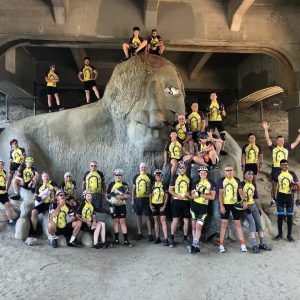 Rain or shine, we were determined to reach our destination by the end of the day. I faintly recall in South Dakota, when flakes of snow began to sprinkle down like flower petals – much to our surprise – as it was the middle of summer. Astonished, we gawked as the cascading snow flakes erupted into a full-blown snow and hail storm; it was just our luck that we were taking a resting day at that time, we were spared of the need to slug through that weather. We were driving back from Mount Rushmore – we took side excursions as to tour famous historical locations – and the car’s passengers were going crazy in amazement at the snow falling in the country that had blazing hot only days before. It’s incredulous to see the changes in geography, climate, and culture that transforms from state to state.
Rain or shine, we were determined to reach our destination by the end of the day. I faintly recall in South Dakota, when flakes of snow began to sprinkle down like flower petals – much to our surprise – as it was the middle of summer. Astonished, we gawked as the cascading snow flakes erupted into a full-blown snow and hail storm; it was just our luck that we were taking a resting day at that time, we were spared of the need to slug through that weather. We were driving back from Mount Rushmore – we took side excursions as to tour famous historical locations – and the car’s passengers were going crazy in amazement at the snow falling in the country that had blazing hot only days before. It’s incredulous to see the changes in geography, climate, and culture that transforms from state to state. When everyone first gathered at Seattle, practically no one recognized each other. Ten scouts came from all over the country – Virginia, Pennsylvania, Florida, California. In biking, there is a concept called a paceline, in which cyclist draft off one another by keeping the shortest distance possible between them to reduce wind resistance. Doing so decreases effort levels by twenty percent, yet one sudden change in pace or direction and the whole line could collapse as easily as dominos. The journey was a mix of broken bikes to worn out bodies, scratches to scars, bruises to blisters. Nonetheless, near the end of the trip, we were all able to put trust in one another as comrades, laugh together as friends, and take liberties as if we had known each other all our lives. That’s the kind of bonding that forms out of two months of suffering; if we didn’t support one another, we wouldn’t come out in one piece.
When everyone first gathered at Seattle, practically no one recognized each other. Ten scouts came from all over the country – Virginia, Pennsylvania, Florida, California. In biking, there is a concept called a paceline, in which cyclist draft off one another by keeping the shortest distance possible between them to reduce wind resistance. Doing so decreases effort levels by twenty percent, yet one sudden change in pace or direction and the whole line could collapse as easily as dominos. The journey was a mix of broken bikes to worn out bodies, scratches to scars, bruises to blisters. Nonetheless, near the end of the trip, we were all able to put trust in one another as comrades, laugh together as friends, and take liberties as if we had known each other all our lives. That’s the kind of bonding that forms out of two months of suffering; if we didn’t support one another, we wouldn’t come out in one piece. Cycling across America is no easy feat. I only had a year to prepare after being invited by the tour director to participate in this intense challenge. If you can get over the idea that biking across America isn’t impossible, do your best to train your body and mind by being prepared, accept the fact that there will be pain, and chip away at it little by little, to do such an incredible feat is much simpler than you may assume. I recommend any scout adventurous enough to seize this incredible opportunity if it ever pops up again in the future. Not only was it the hardest and best two months I’ve ever experienced, but also it is something I’ll carry with me for the rest of my life.
Cycling across America is no easy feat. I only had a year to prepare after being invited by the tour director to participate in this intense challenge. If you can get over the idea that biking across America isn’t impossible, do your best to train your body and mind by being prepared, accept the fact that there will be pain, and chip away at it little by little, to do such an incredible feat is much simpler than you may assume. I recommend any scout adventurous enough to seize this incredible opportunity if it ever pops up again in the future. Not only was it the hardest and best two months I’ve ever experienced, but also it is something I’ll carry with me for the rest of my life.
 Scouts and adults leaders from Troops 217 in Middletown and 1812 in Frederick teamed up in July for a 10-day canoe trek in the Boundary Waters Canoe Area Wilderness at BSA’s Northern Tier High Adventure Base in Ely, Minnesota. The combined crew paddled over 80 miles through 15 different lakes/bays, including over 10 miles of portaging, with two mile-long portages.
Scouts and adults leaders from Troops 217 in Middletown and 1812 in Frederick teamed up in July for a 10-day canoe trek in the Boundary Waters Canoe Area Wilderness at BSA’s Northern Tier High Adventure Base in Ely, Minnesota. The combined crew paddled over 80 miles through 15 different lakes/bays, including over 10 miles of portaging, with two mile-long portages.